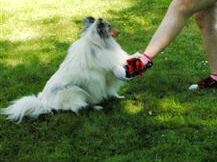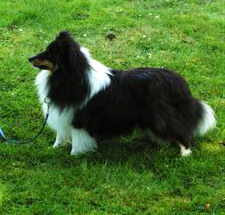Though chillier than normal, it’s that time of year again. The time of year we in the Pacific Northwest start mowing, thatching, aerating and
 fertilizing our lawns. We’re deciding what flowers and veggies to plant and we’re getting containers and garden plots ready for the seeds and starters we plan to put in as soon as weather permits. We all want to make sure our lawn and garden is safe for our pets and kids.
fertilizing our lawns. We’re deciding what flowers and veggies to plant and we’re getting containers and garden plots ready for the seeds and starters we plan to put in as soon as weather permits. We all want to make sure our lawn and garden is safe for our pets and kids.
And yet there may be a greater than average desire for a lush, weedless lawn when you live in Washington (the Evergreen State) and the Seattle area (the Emerald City) as we do.

Master Gardeners abound in our area and so do fertilizers and other products promising to make ours the most beautiful, healthy and weed-free yard around.
Q: What chemicals can we use safely in the yard and flower beds?
Dr. Frank: For the safety of your pets, I recommend the fewer chemicals the better – and none is the optimal answer. Chemicals and pesticides that are labeled dangerous to pets should definitely be avoided.
Instead of synthetic fertilizers or chemicals, choose organic options. Be aware that cats and dogs don’t need to eat any grass or dirt to become very ill. Products with toxic chemicals can be absorbed through their skin if they roll in the grass, or stick to their fur or hair and the pads of their paws. When your dog or cat comes in and cleans her feet and hair with her tongue, she ingests any chemicals on the lawn or garden.
If you have a service that takes care of your yard, be sure to contact them to find out exactly what they use and/or precisely how long you should keep the pets off the lawn. Follow those instructions exactly. Be considerate of your neighbors’ pets as well by making sure your yard is clearly posted to stay off the lawn until it is safe.
Q: How can I tell if my dog or cat is sick because of fertilizers or pesticides?
Dr. Frank: Pets who have ingested fertilizers, especially ones with high percentages of phosphorus and potassium compounds, can show symptoms such as vomiting, drooling, diarrhea or lethargy.
More severe symptoms such as tremors or seizures may be seen if toxic levels of chemicals or pesticides, or even high concentrations of iron, have been ingested. Chemical burns have been seen on the pads of the feet after pets have been on a recently treated lawn.
Keep containers and bags of any products stored out of reach of your pets or locked up. Fertilizers, bulbs, plants and chemicals may smell and taste delicious to your pets. Also consider all pets (yours and your neighbors) that may come into the area. Having a product on a shelf may be safely out of reach of a dog, but not necessarily a cat.
Rodenticides (such as rat poison) and the majority of slug bait products are extremely dangerous for pets and can be fatal within one (1) hour if ingested.
Q: Is a fertilizer that is high in nitrogen and low in phosphorous and potassium okay?
Dr. Frank: Fertilizers can vary significantly – they become especially dangerous when weed killers are added. Organic fertilizers are best, but always read the labels of any products you consider using and follow the directions specified, such as keeping pets off the area or watering sufficiently after application. If the label indicates it is dangerous to children and/or pets – leave the product on the shelf, not in your yard.
Q: Where can I find information regarding recommended safe products as well as product toxicity for pets?
Dr. Frank: Here are some important links for you:
- Pest management: The Integrated Pest Management page and the Alternative Pest and Disease Control PDF on the Seattle Public Utilities website contain a wealth of information on this topic.
- Plants that are toxic to pets: ASPCA Animal Poison Control Center website or call (888) 426-4435.
- Natural lawn care: The Garden Hotline website has great downloadable brochures for free. The Garden Hotline and Natural Soil Building Program are managed by Seattle Tilth. The King County Natural Lawn Care webpage also has a lot of information in a concise form.
Note: Although the above websites and resources are geared to Pacific Northwest yards and gardens, most of the information will be helpful regardless of where you live. If you live outside the King Counrty, WA area, check your county or state websites for additional information specific to your location.
